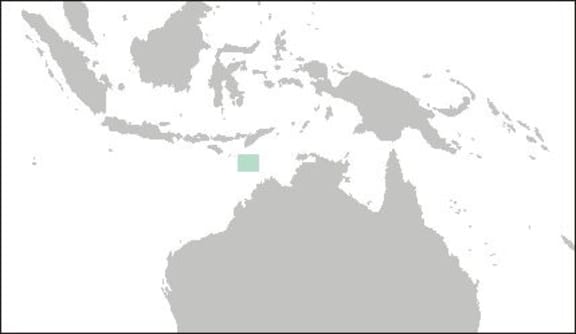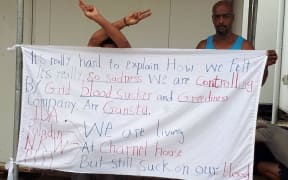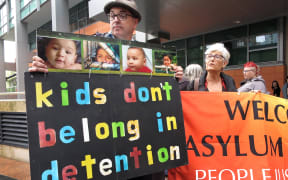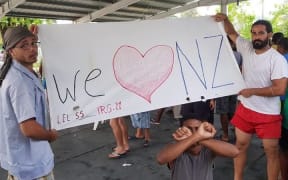Australia's Federal Court has thrown out a government appeal in a case that exposed its treatment of asylum seekers.

An image from the the 61st day of protest in the Manus Island detention centre. Photo: supplied
Last week, the court upheld an earlier ruling that the government had failed to excise the Territory of Ashmore and Cartier Islands from the Migration Zone in 2001.
Refugees who entered Australia via the territory were deemed offshore arrivals who could legally be detained and subjected to fast track processing of their asylum claims.
Lawyer Reuben Saul, a partner in Perth firm Estrin Saul, successfully argued the territory had never been excised.
Mr Saul said boats intercepted at sea were taken to the territory by Customs and Border Force vessels so asylum seekers could be proclaimed unauthorised maritime arrivals.

The position of the Territory of Ashmore and Cartier Islands. Photo: Wikimedia Commons
"This is probably one of the most shocking aspects of the case is that it's shone a light on this practice of towing asylum seeker boats into one of these excised areas," he said.
"Even though they arrived at Darwin later they were told that because they had gone into the so called excised area they weren't allowed to lodge permanent protection visas, they were subject to detention for many years."
Australia's Territory of Ashmore and Cartier Islands is an uninhabited reef system about 150 kms from Indonesia and 850 kms from mainland Australia.
The attempt to excise the territory from Australia's Migration Zone failed because it was incorrectly described as having a port, Mr Saul said.
"The case itself was really centred on whether or not Ashmore Reef was considered to meet the definition of a port," he said.
"Because there was so little going on there the court decided it was not a port and therefore it couldn't be excised in the way that it was."
The asylum applications of people who arrived at an excised area between mid 2012 and mid 2013 were subjected to fast track processing, "a much less robust process of having their claims determined", Mr Saul said.
"Which meant their claims for refugee status were processed much quicker, they didn't get access to the administrative appeals tribunal."

Reuben Saul Photo: Callum Sims
While the government had yet to indicate whether it would seek leave to appeal to the High Court, it had prepared a retrospective bill that could fix its excision blunder.
"It says that for that entire time since 2001 the appointment of the port was valid. That bill is before parliament at the moment... there's about 1600 applicants the government has acknowledged may be affected by this," Mr Saul said.
But the bill's retroactivity had drawn criticism from the Senate Standing Committee for the Scrutiny of Bills.
"Such legislation can undermine values associated with the rule of law. One such value is that persons should be able to order their affairs on the basis of the law as it stands... Another important rule of law principle is that the governors are, like the governed, bound by the law and cannot exceed their legal authority. Retrospective validation of government decisions and actions can undermine this principle."
Retrospective legislation also caused concern amoung lawyers, Mr Saul said.
"If something was done wrong in the past or if this was something that the minister was never permitted to do it does raise questions why a bill is being introduced now that effectively changes the law over the past 17 years," he said.
"A bill that simply fixes the wrongs of the last 17 years, we would say, is inadequate."
This story has been edited for clarity.






